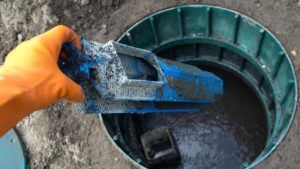Septic tank owners often wonder how long do septic tanks last? The answer depends on several factors, but most systems serve homeowners reliably for 20 to 40 years with proper care.
This guide is for current and prospective septic system owners who want to understand their investment timeline and plan for future maintenance or replacement costs.
We’ll break down the average lifespan of concrete, plastic, and steel septic tanks, plus explore the key factors that determine whether your system might last 30 years or need replacement much sooner. You’ll also learn the warning signs that indicate your tank is failing and discover proven maintenance practices that can add years to your system’s life.
Average Lifespan of Different Septic Tank Materials
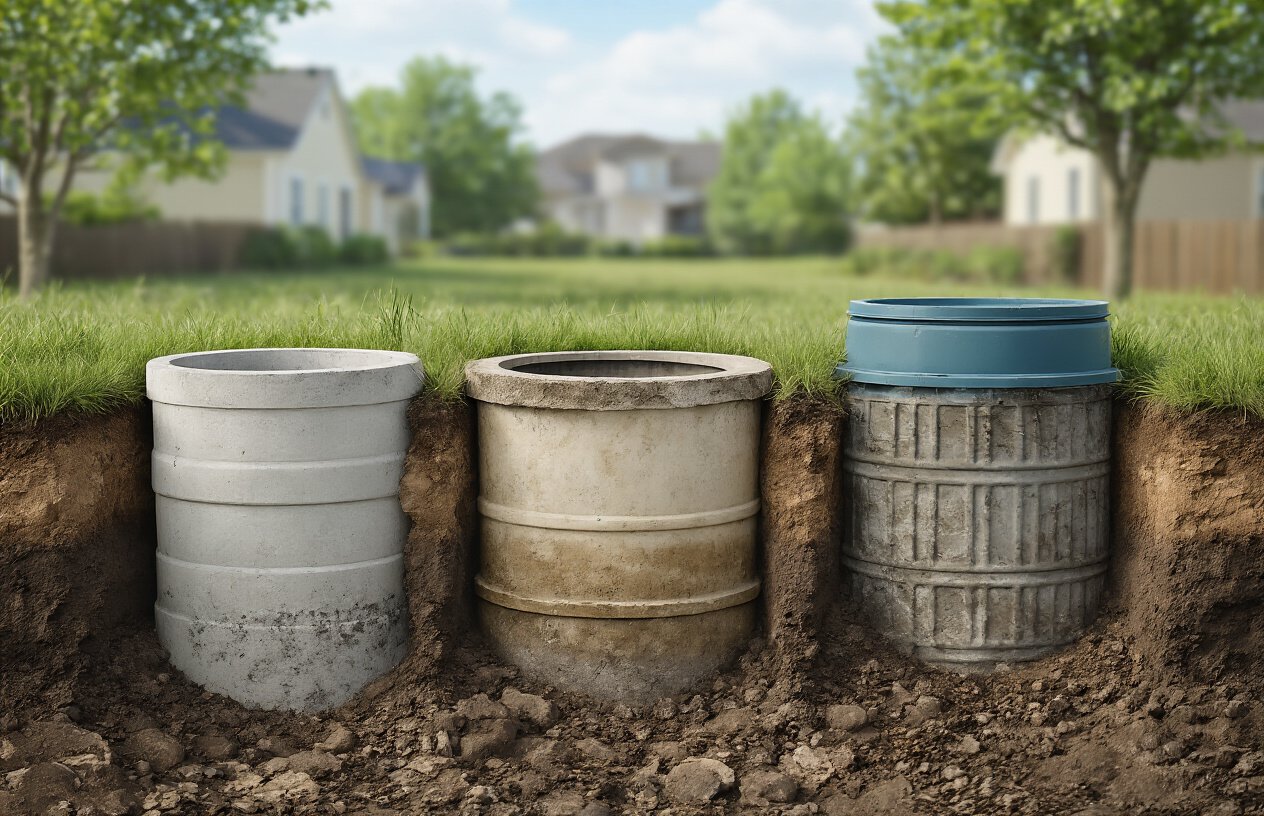
Concrete septic tanks and their 20-40 year lifespan
Concrete septic tanks represent the most common choice for residential septic systems, and for good reason. These tanks typically deliver 20 to 40 years of reliable service when properly maintained and installed in suitable soil conditions. The wide lifespan range depends heavily on several factors, including the quality of concrete used during construction, local soil pH levels, and groundwater conditions.
High-quality concrete tanks can actually push beyond the 40-year mark in ideal conditions. Some homeowners report their concrete systems lasting 50+ years with diligent maintenance. However, concrete’s porous nature makes it vulnerable to corrosion from acidic soil and hydrogen sulfide gases produced during waste decomposition. The tank walls and inlet/outlet pipes are particularly susceptible to deterioration over time.
Steel tanks lasting 15-20 years with proper maintenance
Steel septic tanks offer the shortest lifespan among common septic tank materials, typically lasting 15 to 20 years in the ground. While steel tanks were once popular due to their lower upfront cost, they face significant challenges from corrosion and rust that dramatically limit their longevity.
The primary enemy of steel tanks is moisture, which accelerates rust formation both inside and outside the tank. Even with protective coatings and regular maintenance, steel tanks rarely exceed their expected lifespan. Many municipalities have banned new steel tank installations due to their tendency to fail prematurely, potentially causing environmental contamination and expensive emergency repairs.
Fiberglass tanks providing 30+ years of reliable service
Fiberglass septic tanks have gained popularity as a durable, lightweight alternative to traditional materials. These tanks typically last 30 years or more, with many installations exceeding 40 years of trouble-free operation. The non-porous nature of fiberglass makes it highly resistant to corrosion, chemical damage, and root intrusion.
One significant advantage of fiberglass tanks is their resistance to ground movement and freeze-thaw cycles that can crack concrete tanks. They’re also lighter than concrete, making installation easier and less expensive. However, fiberglass tanks can be damaged by heavy machinery during installation or backfilling, so proper handling is essential for achieving maximum lifespan.
Plastic tanks offering 30-40 years of durability
Modern plastic (polyethylene) septic tanks deliver impressive longevity, typically lasting 30 to 40 years with proper installation and maintenance. These tanks resist corrosion, chemicals, and root damage while maintaining structural integrity in various soil conditions. High-density polyethylene construction ensures the tank won’t crack, rust, or degrade like other materials.
Plastic tanks excel in areas with aggressive soil conditions or high water tables where concrete might deteriorate quickly. They’re completely watertight when properly installed, preventing groundwater infiltration and effluent leakage. The lightweight design also reduces installation costs and eliminates the need for heavy equipment during placement.
| Material | Typical Lifespan | Key Benefits | Main Drawbacks |
|---|---|---|---|
| Concrete | 20-40 years | Cost-effective, widely available | Susceptible to corrosion |
| Steel | 15-20 years | Low initial cost | Prone to rust and corrosion |
| Fiberglass | 30+ years | Corrosion resistant, lightweight | Can crack if mishandled |
| Plastic | 30-40 years | Chemical resistant, watertight | Limited size options |
Key Factors That Impact Your Septic Tank’s Longevity
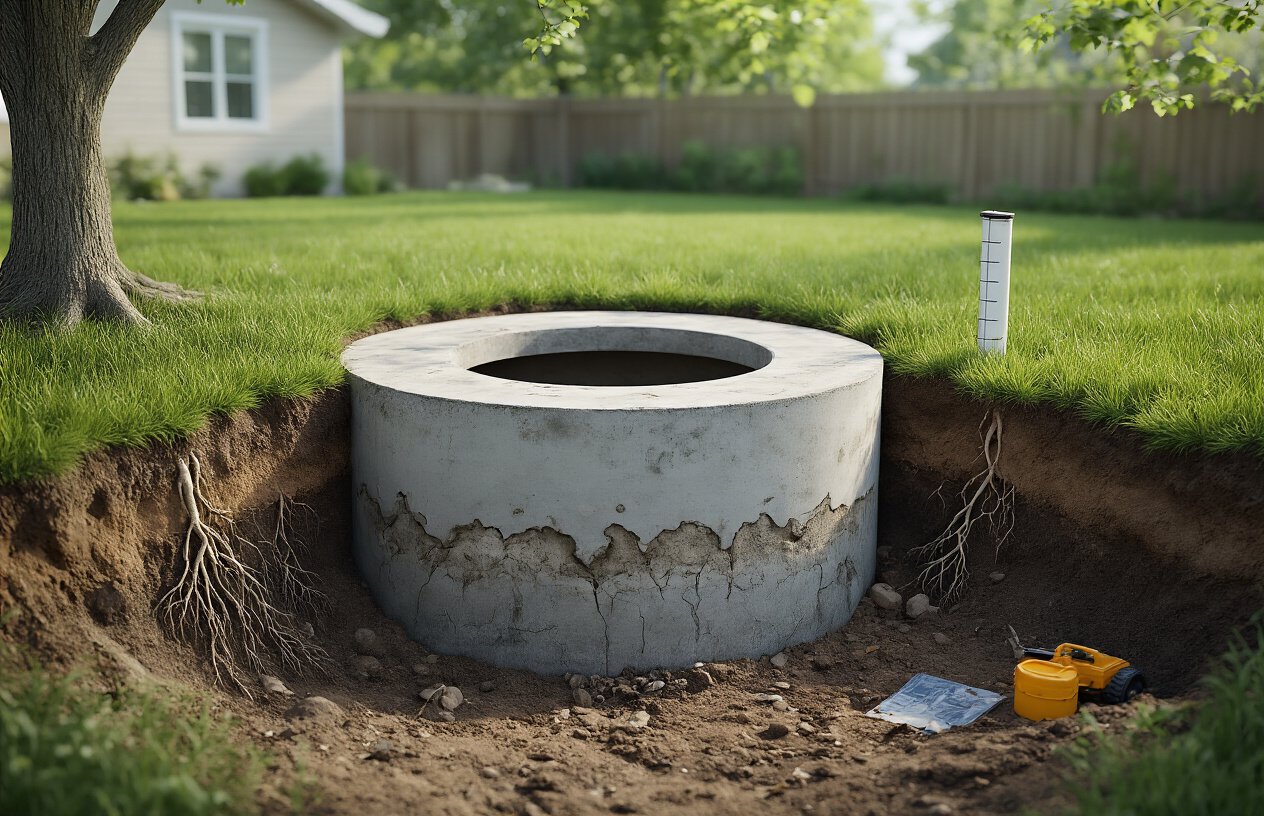
Soil conditions and their effect on tank deterioration
Soil type plays a massive role in determining how long septic tanks last in the ground. Clay soils create poor drainage conditions that can cause water to pool around your tank, leading to premature corrosion and structural damage. The constant moisture exposure accelerates rust in steel tanks and can cause concrete tanks to crack over time.
Sandy soils offer better drainage but present different challenges. The loose soil structure provides less support for the tank, potentially causing settling or shifting that damages pipes and connections. Rocky soils can be equally problematic, creating stress points where the tank contacts sharp stones.
Acidic soils with low pH levels eat away at concrete tanks faster than neutral or alkaline conditions. If your property has acidic soil, your concrete septic tanks might show signs of deterioration within 15-20 years instead of the typical 30-40 year lifespan.
Soil permeability affects how quickly wastewater moves through the drain field. Poor permeability forces the system to work harder, creating backpressure that can damage tank components and reduce overall system life.
Water table levels and structural integrity concerns
High water tables create serious problems for septic systems. When groundwater levels rise above your tank, the buoyant force can actually push an empty tank out of the ground – a phenomenon called “tank floating.” This risk explains why proper pumping schedules matter so much for system longevity.
Seasonal water table fluctuations put stress on tank walls through repeated wet-dry cycles. The constant expansion and contraction can create hairline cracks that worsen over time. Tanks installed in areas with fluctuating water tables rarely achieve the maximum lifespan seen in stable conditions.
High groundwater also increases the risk of groundwater infiltration into the tank through small cracks or loose fittings. This extra water dilutes the treatment process and can overwhelm the system, leading to premature failure of both the tank and drain field.
Household size and waste volume affecting system strain
Larger households generate more wastewater and solid waste, which directly impacts tank longevity. A family of six produces roughly three times more waste than a couple, meaning more frequent pumping and faster accumulation of solids that can damage tank components.
How long can a septic tank last without being pumped depends heavily on household size. A two-person household might go 5-7 years between pumpings, while a family of six should pump every 2-3 years. Skipping regular maintenance dramatically shortens tank life by allowing solids to build up and potentially clog outlet pipes or damage baffles.
Heavy water usage patterns also strain the system. Households that frequently run multiple appliances simultaneously or take back-to-back showers can overwhelm the tank’s capacity to separate solids and liquids properly. This leads to solids escaping into the drain field, causing premature system failure.
| Household Size | Recommended Pumping Frequency | Expected Impact on Tank Life |
|---|---|---|
| 1-2 people | Every 5-7 years | Minimal impact |
| 3-4 people | Every 3-5 years | Moderate impact |
| 5+ people | Every 2-3 years | Significant impact |
Warning Signs Your Septic Tank Needs Replacement
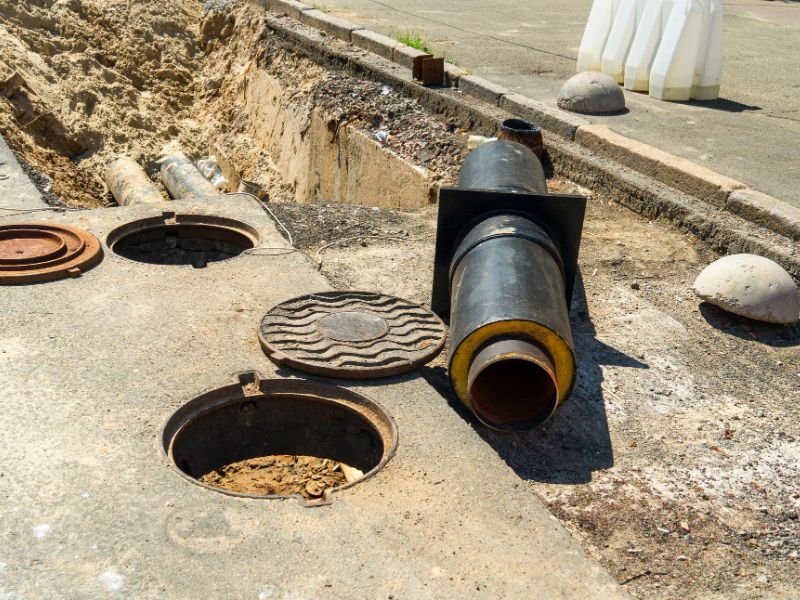
Frequent Backups and Slow Drains Throughout Your Home
When multiple drains in your house start backing up regularly, your septic tank is likely failing. You might notice toilets backing up when you run the washing machine, or sinks draining slowly across different rooms. This happens because a failing septic system can’t properly process wastewater anymore, causing it to back up into your home’s plumbing.
The problem gets worse when several fixtures act up at once. If your kitchen sink, bathroom drains, and laundry room all show signs of poor drainage simultaneously, your septic tank has probably reached its capacity limits or suffered structural damage. Unlike a simple clog in one drain, system-wide drainage issues point to septic failure that requires immediate attention.
Sewage Odors Around Your Property and Tank Area
Strong sewage smells near your septic tank or around your yard signal serious problems. A properly functioning septic system contains odors underground, so when you smell sewage outside, wastewater is escaping where it shouldn’t be.
These odors often appear first around the tank area, then spread to other parts of your property as the problem worsens. The smell might be strongest after heavy rains or when you use a lot of water at once. Don’t ignore these warning signs – they indicate your septic tank may have cracks, loose connections, or has simply exceeded its useful life span.
Lush Grass Growth Over the Drain Field
Abnormally green, thick grass growing over your drain field looks nice but spells trouble for your septic system. When your septic tank fails, excess nutrients from untreated wastewater feed your lawn, creating patches of unusually healthy grass.
This happens because a failing septic system releases nitrogen-rich wastewater directly into the soil instead of properly treating it first. While your neighbors might compliment your gorgeous lawn, this lush growth pattern indicates your septic tank can’t process waste effectively anymore. The grass may also grow faster and need cutting more frequently than other areas of your yard.
Standing Water or Wet Spots in Your Yard
Soggy areas or standing water near your septic tank or drain field reveal system failure. When septic tanks crack or overflow, untreated wastewater surfaces in your yard instead of being absorbed underground.
These wet spots often appear during dry weather when the rest of your lawn looks normal. The water might have a foul smell and could pose health risks to your family and pets. Sometimes you’ll see actual sewage surfacing, which demands immediate professional attention. Standing water around your septic system means the tank has likely exceeded how long septic tanks last in the ground and needs replacement rather than repair.
Maintenance Practices That Extend Tank Life
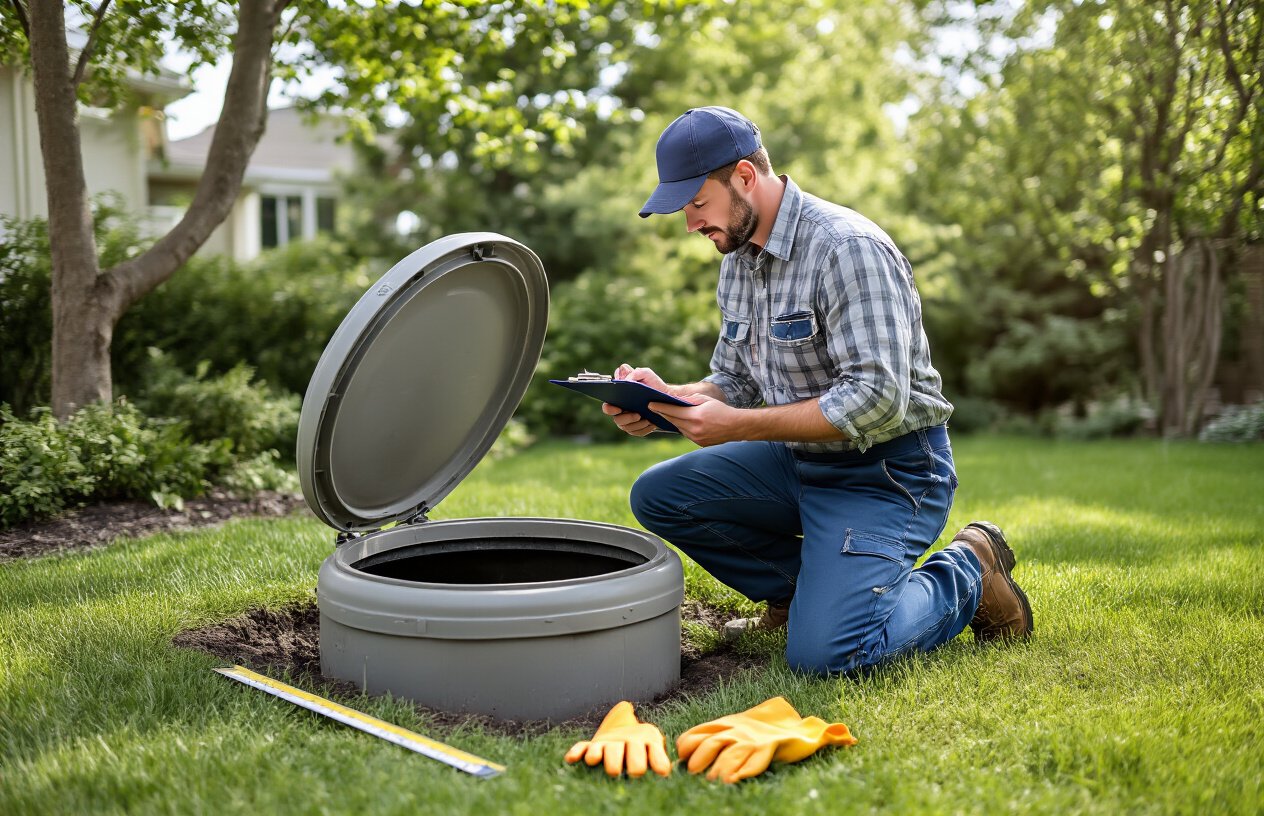
Regular Pumping Schedules Based on Household Size
The most critical factor in determining how long septic tanks last in the ground is following proper pumping schedules. A typical household of four should pump their septic tank every 3-4 years, but this timeline varies significantly based on your family size and daily water usage. Smaller households with 1-2 people can often wait 4-5 years between pumpings, while larger families may need annual service.
Your septic tank’s size also plays a role in determining the schedule. A 1,000-gallon tank serving six people will fill much faster than a 1,500-gallon system serving the same household. Keep track of your last pumping date and monitor the sludge layer buildup to stay on schedule.
| Household Size | Tank Size | Recommended Pumping Frequency |
|---|---|---|
| 1-2 people | 750-1,000 gallons | Every 4-5 years |
| 3-4 people | 1,000-1,250 gallons | Every 3-4 years |
| 5-6 people | 1,250-1,500 gallons | Every 2-3 years |
| 7+ people | 1,500+ gallons | Every 1-2 years |
Avoiding Harmful Chemicals and Non-Biodegradable Items
Your septic system relies on beneficial bacteria to break down waste naturally. Harsh chemicals like bleach, antibacterial soaps, and drain cleaners can kill these essential microorganisms, disrupting the entire treatment process. Switch to septic-safe cleaning products and avoid dumping paint, motor oil, or pharmaceutical medications down your drains.
Non-biodegradable items cause even more damage. Cigarette butts, cat litter, feminine hygiene products, and baby wipes create clogs and prevent proper waste breakdown. Even items labeled as “flushable” often don’t decompose quickly enough for septic systems. Paper towels and dental floss are also common culprits that accumulate in the tank over time.
Grease and cooking oils deserve special attention. These substances solidify in your septic tank, creating thick layers that interfere with normal bacterial activity. Scrape plates clean before washing and dispose of cooking fats in the trash instead of washing them down the sink.
Professional Inspections Every 3-5 Years
Can a septic system last 50 years? Professional inspections are key to reaching maximum lifespan potential. During these inspections, technicians check for cracks in concrete septic tanks, evaluate the condition of baffles, and assess the drain field’s performance. Early detection of problems prevents minor issues from becoming expensive replacements.
A qualified inspector will measure sludge and scum layers, test the structural integrity of your tank, and examine the distribution box. They’ll also evaluate your drain field for signs of failure like soggy soil or sewage odors. These comprehensive evaluations typically cost $200-400 but can save thousands in premature replacement costs.
Schedule inspections based on your tank’s age and material. Newer systems might only need checks every 5 years, while older installations benefit from more frequent monitoring. Keep detailed records of all inspections and maintenance to track your system’s performance over time.
Proper Water Usage Habits to Prevent System Overload
Water conservation directly impacts how long can a septic tank last without being pumped and overall system longevity. Excessive water usage floods your septic tank, preventing proper settling of solids and pushing untreated wastewater into the drain field too quickly.
Spread out laundry loads throughout the week instead of doing multiple loads in one day. This gives your septic system time to process wastewater properly between heavy usage periods. Fix leaky faucets and running toilets immediately, as these constant water sources can overwhelm your system.
High-efficiency appliances reduce water consumption significantly. Low-flow toilets, water-saving showerheads, and efficient washing machines all contribute to reduced strain on your septic system. Even small changes like taking shorter showers and only running dishwashers with full loads make a meaningful difference.
Consider the timing of water-intensive activities. Avoid running multiple water-using appliances simultaneously, and space out activities like showering, laundry, and dishwashing throughout the day. Your septic system will process waste more effectively when it’s not constantly receiving new wastewater.
Cost Considerations for Tank Replacement vs Repair
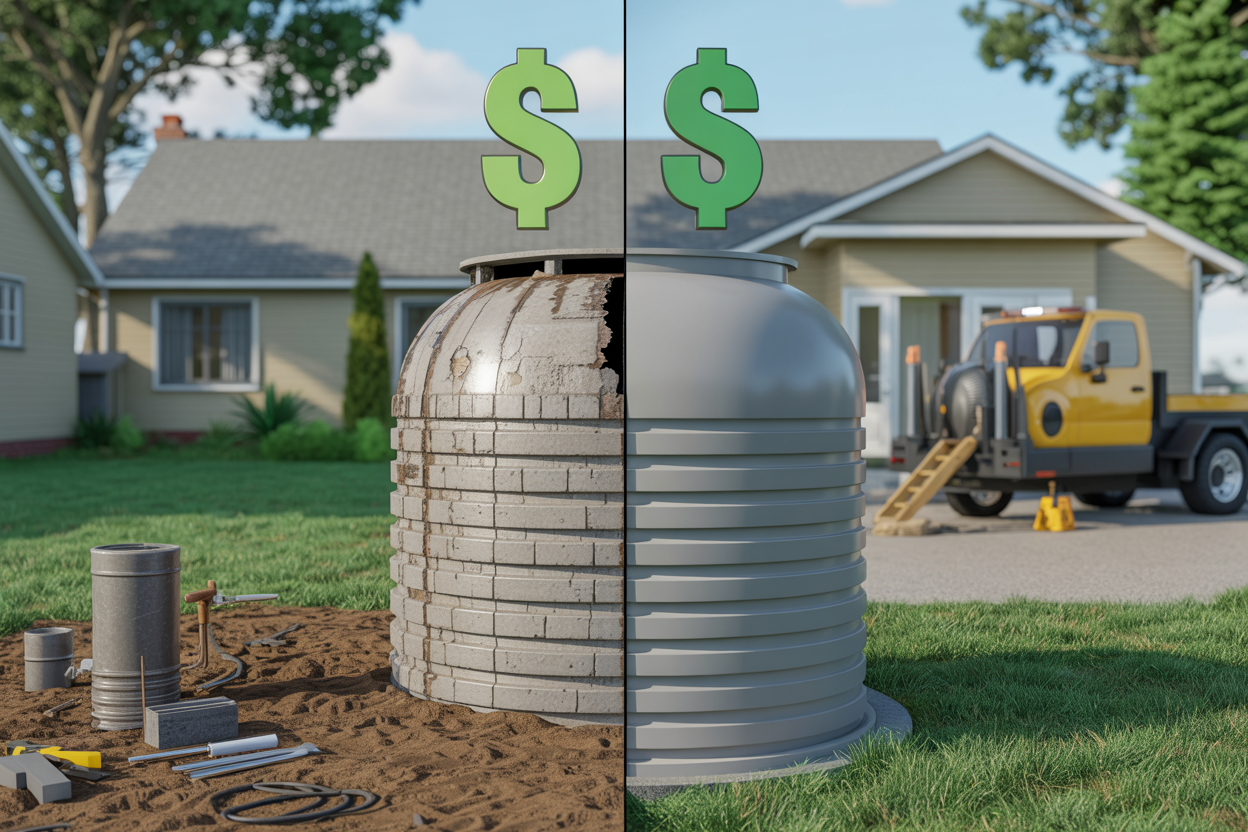
Repair Costs for Minor Issues and Component Replacement
Most septic system repairs fall into the minor category, ranging from $150 to $1,500 depending on the problem. Simple fixes like replacing a damaged baffle typically cost between $300-600, while pump repairs or replacements run $800-1,200. Drain field issues present more complexity – minor repairs might cost $1,000-3,000, but extensive damage can push costs toward $5,000-10,000.
Common repair scenarios include:
- Inlet/outlet pipe repairs: $200-800
- Distribution box replacement: $500-1,200
- Septic pump motor replacement: $600-1,000
- Tank lid replacement: $150-400
- Minor crack sealing: $300-800
The key advantage of repairs lies in their speed and lower upfront cost. Most minor repairs can be completed within a day or two, minimizing disruption to your household routine.
Full Replacement Expenses by Tank Material Type
How much does it cost to replace a septic tank varies dramatically based on material choice and installation complexity. Here’s what you can expect:
| Tank Material | Cost Range | Installation | Total Cost |
|---|---|---|---|
| Concrete | $1,200-2,500 | $2,000-4,000 | $3,200-6,500 |
| Plastic/Poly | $800-1,800 | $1,500-3,500 | $2,300-5,300 |
| Fiberglass | $1,600-3,200 | $2,000-4,000 | $3,600-7,200 |
| Steel | $1,000-2,000 | $1,800-3,800 | $2,800-5,800 |
Concrete tanks dominate the market because how long do concrete septic tanks last – typically 40-60 years with proper care. While steel tanks cost less upfront, they rarely last beyond 20-25 years due to corrosion issues.
Additional replacement factors affecting how much to replace a septic tank include:
- Soil conditions: Rocky or clay soil increases excavation costs by 20-40%
- Accessibility: Difficult access can add $1,000-3,000 to labor costs
- Permit fees: Usually $200-800 depending on local regulations
- System size: Larger households need bigger tanks, increasing costs proportionally
Long-Term Savings from Proactive Maintenance Investments
Regular maintenance represents the smartest financial strategy for septic ownership. Annual inspections cost $200-400, while pumping every 3-5 years runs $300-600. These seemingly small expenses pale against replacement costs.
Consider this comparison: A homeowner spending $400 annually on maintenance over 30 years invests $12,000 total. Compare that to emergency replacement costs of $15,000-25,000, and the math becomes clear. Proactive maintenance can extend your system’s life significantly – some well-maintained systems demonstrate can a septic system last 50 years or even approach the century mark with exceptional care.
How long can a septic tank last without being pumped becomes a costly experiment. Most tanks reach critical capacity within 3-5 years, leading to backup issues, drain field contamination, and premature system failure. The resulting damage often requires complete replacement rather than simple repairs.
Smart maintenance investments include:
- Regular pumping schedule: Prevents solids buildup and extends tank life
- Bacterial additives: Help maintain healthy tank ecosystem
- Water usage monitoring: Reduces strain on aging systems
- Professional inspections: Catch problems before they become expensive
How long do septic tanks last in the ground depends heavily on maintenance consistency. Well-maintained concrete systems routinely exceed 40 years, while neglected tanks might fail within 15-20 years regardless of material quality.
Conclusion
Your septic tank’s lifespan really comes down to what it’s made of and how well you take care of it. Concrete tanks can serve you for 40 years or more, while plastic and fiberglass options typically last around 20-30 years. The secret to getting the most out of your investment lies in regular maintenance – pumping every 3-5 years, watching what goes down your drains, and staying alert to warning signs like slow drains, bad smells, or wet spots in your yard.
Don’t wait until you’re dealing with a messy backup or complete system failure. Schedule regular inspections with a qualified professional and address small issues before they become expensive disasters. When replacement time does come, weigh the costs carefully – sometimes a repair can buy you a few more years, but other times investing in a new system makes more financial sense in the long run. Taking care of your septic system now will save you thousands of dollars and major headaches down the road.




